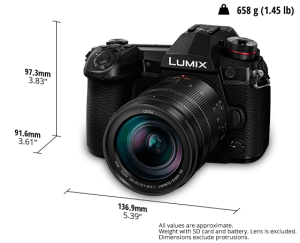 Pros: Incredibly fast burst shooting and blistering autofocus performance improves your chances of catching elusive wildlife moments. Superb build quality. Brilliant handling and ergonomics. Much smaller and lighter than equivalent DSLR system. Dual IS combines exceptional in-body sensor-shift stabilisation with excellent lens-based stabilisation (for compatible lenses) to make handholding at much slower shutter speeds viable. Outstanding image quality, great dynamic range. Good selection of Micro 4/3 lenses available. I could go on….
Pros: Incredibly fast burst shooting and blistering autofocus performance improves your chances of catching elusive wildlife moments. Superb build quality. Brilliant handling and ergonomics. Much smaller and lighter than equivalent DSLR system. Dual IS combines exceptional in-body sensor-shift stabilisation with excellent lens-based stabilisation (for compatible lenses) to make handholding at much slower shutter speeds viable. Outstanding image quality, great dynamic range. Good selection of Micro 4/3 lenses available. I could go on….
Cons: Smaller sensor means image quality suffers more than with full frame equivalents if you crank the ISO up in low light, however, the G9 does a good job controlling noise and performed better than I was expecting, holding its own well. Initially I found the autofocus, while fast and accurate for the most part, occasionally missed the subject in the foreground and locked on to the background. Happened less and less as I got used to the camera, so perhaps a technique rather than tech problem.
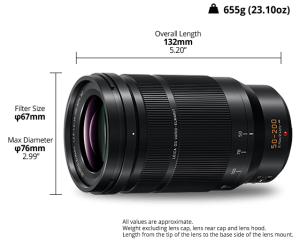 Price: Panasonic Lumix G9 (Body Only) GB£1,499.00 (c. €1,696.00), Panasonic Lumix Leica DG 12-60mm f2.8-4.0 GB£699.00 (c. €791.00) Panasonic Lumix Leica DG 50-200mm f2.8-4.0 £1,649.00 (c. €1,866.00), Panasonic Lumix G9 + Lumix Leica DG 12-60mm f2.8-4.0 kit GB£2019.99 (c. €2286.00).
Price: Panasonic Lumix G9 (Body Only) GB£1,499.00 (c. €1,696.00), Panasonic Lumix Leica DG 12-60mm f2.8-4.0 GB£699.00 (c. €791.00) Panasonic Lumix Leica DG 50-200mm f2.8-4.0 £1,649.00 (c. €1,866.00), Panasonic Lumix G9 + Lumix Leica DG 12-60mm f2.8-4.0 kit GB£2019.99 (c. €2286.00).
NB. G9 Camera Body Tested with the Leica DG 12-60mm f2.8-4.0 and Leica DG 50-200mm f2.8-4.0 zoom (offering an equivalent focal length to 100-400mm on a 35mm body). I also got to briefly play with a G9 coupled with both the Leica DG 100-400mm f4.0-6.3 and the Leica DG 200mm f2.8 with 1.4x teleconverter on this photowalk/launch in Dublin earlier this year.
Check out the Lumix G9 on the Panasonic Website here.
|
Panasonic Lumix G9: Full Review
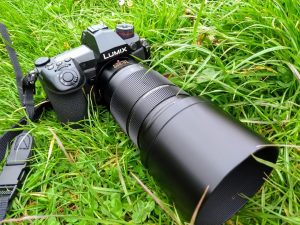 Panasonic announced the Lumix G9 amidst much fanfare in late 2017 for an early 2018 launch.
Panasonic announced the Lumix G9 amidst much fanfare in late 2017 for an early 2018 launch.
At the time I was testing Panasonic’s flagship Micro 4/3 body, the Lumix GH5 with the Leica DG 100-400mm zoom. I loved lots of things about the GH5, particularly it’s compact form-factor, professional build and handling and impressive image quality, but I couldn’t help feeling that, as a predominantly stills-focused photographer there were areas where the GH5’s video-bias got in the way — and there was certainly room for improvement.
I was intrigued to see if the Lumix G9 would live up to its promise as the ultimate Lumix stills camera.
After a brief play with a Lumix G9 in the Botanic Gardens in Glasnevin, Dublin back in January I was suitably impressed with its speed, handling and ergonomics. But I knew I’d need to spend a lot more time with this camera to really put it through its paces. I’d have to wait until April for a review sample to become available. It arrived along with the brand new Lumix Leica DG 50-200mm f2.8-4.0 professional zoom lens.
Here’s how we got on.
First Impressions
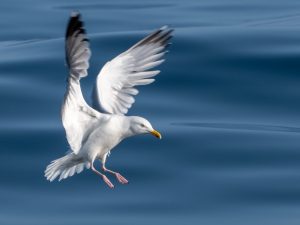
Like the Lumix GH5 the Lumix G9 oozes quality. It is reassuringly solid in the hand, without being heavy thanks to its lightweight magnesium alloy chassis. The finish is top drawer too… lending it a high-end, professional feel. Both the camera and lens are also extensively weather sealed — which is always a bonus when you’re photographing things outdoors in Ireland using fairly expensive gear.
The G9 looks like a svelte version of a compact DSLR. While it is noticeably thinner, it has bulges and bumps in all the right places and a deep hand-grip which means it sits beautifully in the hand and is perfectly balanced, even with long lenses attached. Of course, with glass attached the G9, thanks to its mirrorless design and 4/3 sensor, is significantly smaller and lighter than an equivalent spec, equivalent focal-length full-frame DSLR setup would be.
Menus and Controls

The Lumix G9 has options for everything — and pretty much every feature on the camera is configurable. That leads to a fairly extensive and complex menu system, but as with the Lumix GH5, the menu system is logically laid out and easy to navigate, and once you get used to the little icons it’s pretty quick and easy to find your way around. You can also edit the menu to suit your needs, and set-up your own customised options for the features you access the most.
One of the great features of the G9 though — and one that will appeal to keen wildlife photographers, who often need to adjust things quickly in the field — is the fact that once you’ve set up the camera you hardly have to delve into the menus at all. All of the main camera modes, functions and options are accessible via a host of easily accessible physical controls (wheels, dials, buttons and mini-joysticks) on the camera body. These controls are fully configurable, so you can assign whatever function you want to any of the buttons, change the rotation direction of the main control dials, switch the dials around and generally alter and tweak things to your heart’s content.
I found the default settings offered intelligent and intuitive options that covered most of what I needed — but it’s fantastic to have this level of control over the configuration of the camera should you want it.
One thing worth mentioning here before we move on is the sensitivity of the shutter release button. It is super light and sensitive… so much so that at first you end up taking photos when all you want to do is focus/lock exposure. That’s not a fault — it’s by design. A sensitive shutter release is a fairly common feature of high-end cameras geared towards wildlife/sports photography. It also helps avoid potential camera shake at slower shutter speeds. You get used to it quickly and while I wasn’t sure at first soon I really liked it.
LCD and Electronic Viewfinder

The Lumix G9 features a flip out, fully articulated LCD screen that can be viewed at any angle or rotated around completely and clipped back into place on the back of the camera. The LCD is a 3.0″ High Resolution 1.04 million dot touchscreen LCD that makes composing and reviewing shots a pleasure. The touch interface is responsive, and a joy to use.
To be honest though, I rarely used the LCD when taking photos, unless I was shooting from a particularly awkward angle when the articulated screen comes into its own. The reason for that becomes obvious as soon as you put your eye up to the large, stunningly detailed Electronic Viewfinder (EVF). Boasting a 3.68M-dot OLED display with an equivalent magnification of 0.83x at 60fps or 120fps it is… in a word… sublime! There are no blackouts, just an immersive, true-to-life reflection of the scene before as seen by the camera sensor.
Even moving from the optical viewfinder of a DSLR, there was very little adjustment required in switching to the G9’s EVF — I got used to it very quickly, and in short-order found I actually preferred it. As with the GH5 you can turn on all manner of technical whiz-bang overlays on the display — but for the most part, with the exception of a basic composition grid, I left it all turned off and simply enjoyed the view.
Using the camera
In the hand
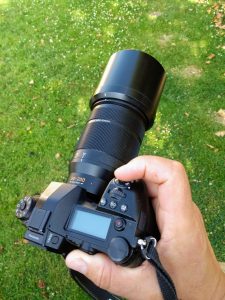
Ergonomically the camera is an absolute joy. In fact, it is so beautifully balanced with the 50-200mm lens attached that you really don’t want to put it down. Everything about it feels deliberate and considered… it just feels “right”.
All of the key controls are within easy reach without having to dive into the menus, and the LCD top-panel — absent from the GH5 and practically every other mirrorless option out there — gives instant visibility of vital shooting info at a glance.
It is a triumph of design that shows Panasonic has really listened to stills photographers and has delivered a camera not to tick some arbitrary marketing-hype box (although to be fair the G9 ticks a lot of different boxes), but to deliver what photographers need to make great images.
This is, without a shadow of a doubt, the most comfortable camera to carry and use in the field that I have ever used.
Speed and Responsiveness
If the Lumix GH5 is fast, the Lumix G9 is blisteringly quick. When launched back in January Panasonic claimed its 0.04 second focus speed to be the fastest of any mirrorless camera to date. I don’t know if it’s been surpassed yet… but it is damned quick. Coupled with continuous burst rates to rival or beat the best on the market, and that gorgeous high-performance flicker-free EVF and you have a camera that is immensely capable, incredibly responsive and just insanely fast.
Autofocus
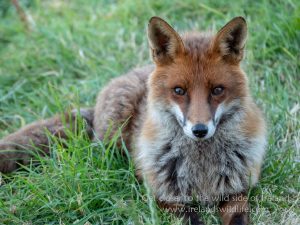 The G9 uses the same 225 point contrast-detect AF system as the GH5, with Panasonic’s proprietary “Depth from Defocus” (DFD) technology, with tweaks to performance that led DP-Review to hail it as “the most capable Contrast Detect AF camera ever released”. Contrast-detect AF works a little differently to the phase-detect systems used in conventional DSLRs, and that can seem a little quirky at first. The way the DFD system works means it shifts the focal point in out rapidly between frames to ascertain precise focus, resulting in a visible “focus wobble” in the EVF which is a little disconcerting until you get used to it. That aside, the autofocus on the G9 is quick, accurate and responsive, and works effortlessly under most conditions.
The G9 uses the same 225 point contrast-detect AF system as the GH5, with Panasonic’s proprietary “Depth from Defocus” (DFD) technology, with tweaks to performance that led DP-Review to hail it as “the most capable Contrast Detect AF camera ever released”. Contrast-detect AF works a little differently to the phase-detect systems used in conventional DSLRs, and that can seem a little quirky at first. The way the DFD system works means it shifts the focal point in out rapidly between frames to ascertain precise focus, resulting in a visible “focus wobble” in the EVF which is a little disconcerting until you get used to it. That aside, the autofocus on the G9 is quick, accurate and responsive, and works effortlessly under most conditions.
You can choose between the full 225 AF points (camera chooses the focus points to use), a smaller user-defined custom AF grouping, adjustable single point AF, face detect AF or subject tracking modes. In AFS mode (single autofocus — where focus is locked when the shutter release is half-pressed) you can also choose pinpoint AF — which lets you focus on a very precise location in the frame via a magnified “picture-in-picture” zoom view. Handy for very precise focusing, but only if your subject and your camera are stationary.
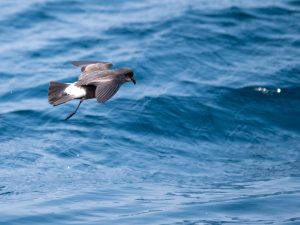
With 225 point AF enabled, the camera would inevitably get things wrong sometimes — focussing on the background instead of the intended subject, or on the wrong bird in a flock. Switching to single-point AF cured the problem, and there’s a handy joystick alongside the EVF for moving the focus point around the frame or, if you’re using the LCD you can simply tap your desired subject to lock focus. Simple.
For the most part with wildlife, you’ll use AFC (continuous autofocus) mode to constantly adjusts the focus as you track your subject in the viewfinder. All of the different focus modes are useful in different scenarios, but I found myself using 225 point AF and single point AF the most. I’m still trying to get to grips with the tracking option.
Tracking moving subjects
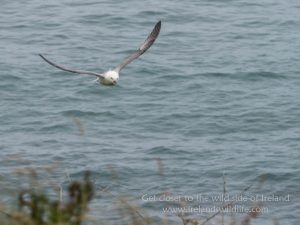
With wildlife the combination of moving subjects and long focal lengths presents a real challenge for the photographer — and for small, fast-moving subjects (especially birds or insects) chief among those is finding your subject in the frame and keeping it there long enough for the camera to lock on and rattle off a few shots.
This is very tricky at the best of times, and even with a camera as quick as the G9 it’s a struggle to keep a lock on something like a dragonfly, hoverfly or small bird in flight. That is the nature of the beast when it comes to fast-moving wildlife. It can be hit and miss (often more miss than hit), but at least with the speed of the G9 on your side you’re in with a fighting chance of getting some useable shots.
Get the subject in the frame and the G9 locks on almost instantly and does a good job of maintaining focus on the subject as long as you can keep it in the frame.
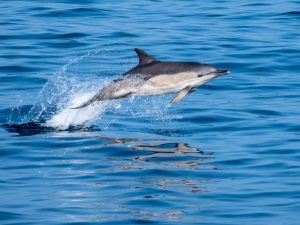
Like the GH5 the G9 also lets you fine-tune its continuous AF performance to define AF Sensitivity (when the camera should / shouldn’t jump focus to something crossing between the camera and the original subject), AF Area Switching (the degree to which the camera should follow a subject around the frame) and Moving Object Prediction (letting the camera know how consistent and predictable the subject’s movement across the frame will be). I haven’t really played with these settings much, other than switching between the four preset modes… but it’s great to have the option to modify these settings and tune the camera’s autofocus system to your shooting needs.
I found my success rate with tracking subjects improved over the time I spent using the camera, so that now, writing this review, I’m fairly confident with moderately mobile subjects. The aforementioned dragonflies are still giving me the runaround… as are house-martins, sand-martins and many other small birds in flight, but I’m fairly sure that’s not a shortcoming of the camera, but of the photographer.
Patience and perseverance will out… and I’m happy the G9 will help me get the results I want sooner than I otherwise might.
Continuous Shooting

Have I mentioned that the G9 is fast?
With the mechanical shutter the G9 can reel off an impressive 12fps in AFS mode, and 9fps in AFC mode. Switch to the electronic shutter, and those numbers jump to an incredible 60fps in AFS mode and 20fps in AFC mode.
There’s also a really nifty “pre-burst” mode, whereby the camera will capture just under half-a-second worth of action from immediately before the moment you press the shutter. It’s brilliant for fast-moving subjects like dolphins, or capturing the moment a bird or insect takes flight. By the time you click the shutter you’ve invariably missed the moment. It’s still tricky, of course, but with Super High Speed “pre-burst” mode on the G9 you’re much more likely to capture that elusive moment of action.
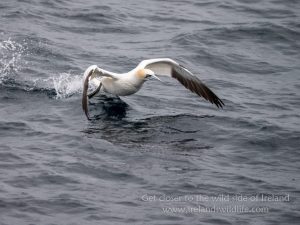
And it does all of this at full resolution with RAW files.
If that’s not enough for you, then the G9 goes a step further, offering 6K/30fps and 4K/60fps photo modes with continuous AF, which essentially records a short video and allow you to extract individual frames as 18MP (6K) or 8MP (4K) jpg images.
With so many different continuous shooting options available, the Lumix G9 offers more flexibility and versatility than ever to help you capture the perfect moment. The one downside of all that speed though is the sheer number of images you capture. That makes for a lot of looking through uploaded images on the computer selecting the keepers and binning the surplus — but when you get the shot you want it’s well worth it.
Image Stabilisation

Another area where the Lumix G9 improves on the GH5’s already impressive stats is with its 5-axis in body image stabilisation system with Dual I.S. II offering up to 6.5 stops of compensation when coupled with compatible Panasonic lenses. IS performance on this camera is outstanding — and that’s great news in situations where you need to use a slower shutter speed than would otherwise be possible. It also means that handheld photographs with longer focal length lenses become possible at ludicrously slow shutter speeds.
In practice, the system works extremely well and the 50-200mm (100-400mm 35mm equivalent) makes for a very versatile and capable walkabout lens you can comfortably handhold all day long, even at relatively slow shutter speeds without having to resort to a monopod or tripod.
Battery life

All cameras with an electronic viewfinder are going to eat batteries more quickly than a mirror-based optical viewfinder… that’s just a fact. However, the G9 has a respectable battery life rating of 400 shots… and in practice, I’ve been averaging more than that on a charge. I’ve never run out of juice… and it’s nowhere near as much of an issue as I thought it might be with this camera anyway — because you can both charge and power the G9 via it’s USB port.
That’s right — while there is a battery charger in the box, you don’t need to remove the battery from the camera to charge it. Just attach a USB 3 lead (the kind that comes with newer portable hard drives) to the camera (or even a standard Micro USB cable if there’s no USB 3 cable handy) and a little red light will start to glow to show your battery is charging.
NB. the lower portion of the in-camera USB 3 port accepts a standard USB C connection for charging — obviously you can’t transfer data in this way, but for charging/powering the camera it works a treat.
You can also power the camera directly over USB — so in theory with a charged portable power pack in your pocket and a longish USB cable you could keep shooting for days in remote locations without needing to recharge.

Investing in an extra battery or two would probably be a sensible move if you’re going to be shooting for extended periods in remote locations though, and there’s also an optional battery grip with another set of camera controls for portrait orientation if that’s something that appeals.
Personally, I love the fact I can just plug my camera into a standard USB charger at night knowing it will be fully charged and ready to go in the morning. No more proprietary chargers to remember: genius!
Image Quality

The quality of the RAW images coming straight off the Lumix G9 coupled with the Leica DG 50-200mm f2.8-4.0 is very impressive, and from what I’ve seen at lower ISO settings they can easily hold their own against APSC/DX crop sensor DSLRs and even full frame options. Obviously, you’ll notice a difference in software if you zoom-in to the pixel level, but in terms of real-world image quality the detail, dynamic range, colour and contrast from the G9 are all excellent.
The Lumix G9 uses the same 20.3MP Live MOS sensor as the GH5, but according to Panasonic literature they’ve “tweaked” the output and the processing to deliver enhanced dynamic range with lower noise and improved colour rendition.

Of course, you expect image quality to fall off more quickly at higher ISO levels with a smaller sensor, and that’s true here too, but the Lumix G9 does a good job of controlling noise and delivering usable images up to ISO3200 — ISO6400 at a push.
Coupled with the superb Dual IS II image stabilisation it makes this camera useful in light conditions where you might expect it to struggle more given its sensor size.
Yes, a full frame camera is going to deliver more detail at lower light levels… there’s no getting around physics. But you may not a) be able to afford the body and glass or b) have the muscle to carry it around all day. In terms of balancing size, weight, performance and image quality it’s hard to fault the Lumix G9.
Of course, if pin-sharp image quality isn’t absolutely crucial — and all you need is a record shot of a species to help ID later or to verify what you’ve seen (birders twitching rarities… I’m talking to you here), then just crank the ISO up to a maximum of 25,600 and get the proof you need.
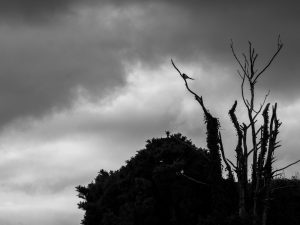
If landscapes and still life is your thing, then the G9 has another trick up its sleeve. It boasts a sensor-shift High-Resolution mode, where the camera takes a series of 8 20MP images, shifting the sensor slightly between each frame, and then combines the shots in-camera to produce a mind-bogglingly detailed 80MP RAW file. The subject and camera have to be still — which limits its usefulness in the wildlife arena — but it’s still a nice feature to have when your wildlife watching leads you to lacations with jaw-dropping landscapes you want to share.
Ports and Connectivity
You won’t find yourself short-changed in terms of connectivity options with the G9. In terms of physical ports you’ll find a full-size HDMI port, a USB-3 fast data port that can also charge/power the camera, microphone and headphone ports and a pair of high speed SD Card slots supporting SD/SDHC/SDXC (UHS-II compatible).
Wireless connectivity for image transfer and camera control is available via built-in WiFi and Bluetooth.
Video
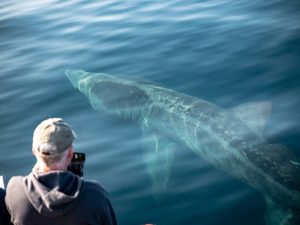
While it is an unapologetically stills-focussed camera, Panasonic’s video pedigree hasn’t been lost on the G9. It remains a superbly capable video camera that can record UHD 4K video at 60fps and Full HD 1080p at up to 180fps. It lacks the 10bit cinematic 4K mode of the GH5, and has a recording limit of c. 60 mins of 4K video at 60fps, but still records broadcast quality 4K footage and has a suite of video features that eclipse much of the competition in its class.
So this is a stills camera, but one that’s can also effortlessly serve double-duty as a broadcast-quality UHD video camera.
I only used the G9 in 1080p Full HD mode during the review period (my laptop croaks if I try and edit 4K video). I’m not much of a videographer — but the quality and ease of use of the video from the G9 is very impressive. I may even record a bit more video while I have the G9 — footage of basking sharks below was recorded “spur of the moment” — I just pointed the camera and pushed record.
Camera Specification
You’ll find the full spec sheet for the Lumix G9 on the Panasonic website here.
Or check out the video below for a quick overview:
Conclusion

Panasonic has done a superb job of addressing the needs of stills photographers with the Lumix G9. It is the camera I found myself wishing the GH5 could be when I reviewed that towards the end of last year.
It’s not so much “giant leaps” Panasonic has made with the Lumix G9… more an intelligent evolution of existing features from their own range and those of their peers into a superbly crafted package that simply does what you need it to, and does it very, very well.
As a wildlife guide and enthusiast, I tend to be carrying far too much gear with me in the field. My camera has to be balanced alongside optics, field guides, extra layers and other gear. If it’s too big, heavy and cumbersome it gets left behind — and that would mean lots of missed opportunities. The G9 and the 50-200mm (100-400mm equivalent) is an ideal walkabout combination that is very easy to carry and is very versatile for general wildlife photography. It is also an ideal focal length range for photographing marine and coastal wildlife from a boat. Yes, occasionally I crave the extra reach of the 100-400mm (200-800mm equivalent) that I’d used with the GH5, and the 200mm f2.8 prime lens with 1.4x teleconverter I got to try with a G9 in January is a sublime lens, but as a day-to-day all-round wildlife combination the Lumix G9 with the 50-200mm zoom attached has an awful lot going for it.
I guess the crucial question is would I switch from my DSLR to the Lumix G9 MFT mirrorles system?
The answer is yes, in a heartbeat!
|
Sample Image Gallery
Click on the image below or on this link to view sample images, including EXIF data, in a Flickr Album.
https://www.flickr.com/photos/wildireland/albums/72157694726805532
Acknowledgement
I’d like to thank the Panasonic/Lumix UK team and the team at PRWise Ireland for submitting the Lumix G9 and Leica DG 50-200mm f2.8-4.0 for review on the Ireland’s Wildlife website.
NB. Ireland’s Wildlife has no specific affiliation with any optics or gear manufacturer for review purposes. All reviews on the site are completely independent and objective and carried out in accordance with our terms and conditions. If you’re an optics or gear manufacturer and would like to submit your product for review on the site please drop us a line using the contact form and we can take things from there.



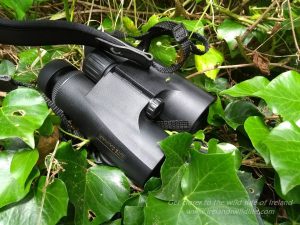






2 comments
Lyle
Great review. And I totally agree with your findings. Today the firmware updates really kept the G9 a modern camera. One update in particular helps with the AF when it tends to miss and focus on the background is the feature “AF Near” found when you set up back button focus. This feature allows for a second AF switch, which often helps nail the missed focus instantly (IME about 80+%) just a AF button. I have “A-Near” set to the upper front fn-4 button to “AF-Near”. And with Backbutton (AF/AE LOCK) set to “AF-ON”, it can be used with all the G9’s AF options without issue, and if the back button AF misses, I push the front button (fn set to AF Near). This 2 button AF set up saved a lot of difficult shots at super tele ranges with the 100-400 Elmar. Having 2 AF buttons helps greatly speed up operation, and it works with all the AF modes on the G9 including the Animal/Human Detect AF in both one area and A.I detect/track.
Nevertheless, this may or may not work for everyone based on preference, technique, and outcome. Thank you for your review, it good to know there are others out there enjoying what the G9 offers.
ThePxr01
This camera is one of the most underrated M 4/3 cameras on the market today. I just upgraded my GH4 to the G9 and I simply can’t believe the difference.Not that the GH4 was all bad. It was an excellent video shooter perhaps lacking low light performance and IBIS. Well the G9 addresses those weaknesses very well. I shoot 80% stills and 20% video / time lapse and the G9 is a purrrrfect fit. Many thanks for an excellent review. Highly recommend this camera